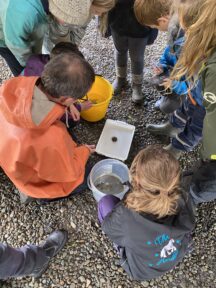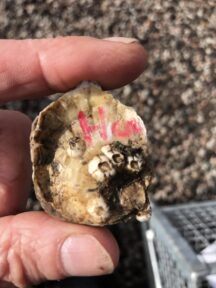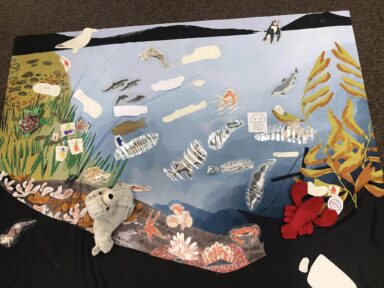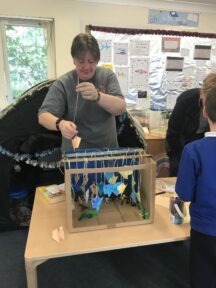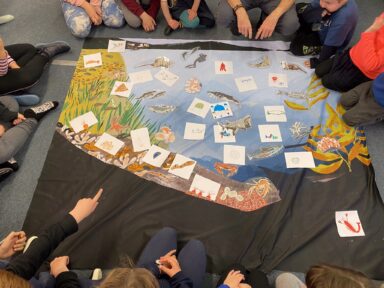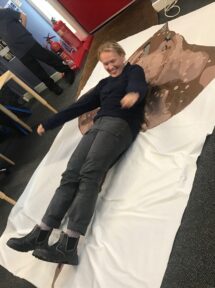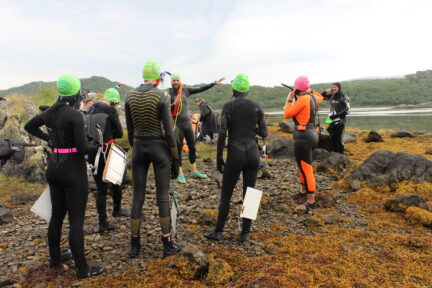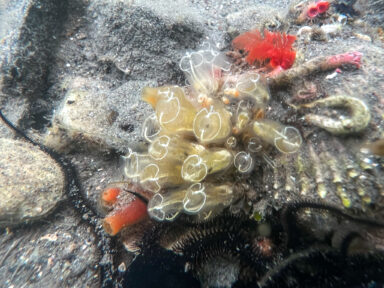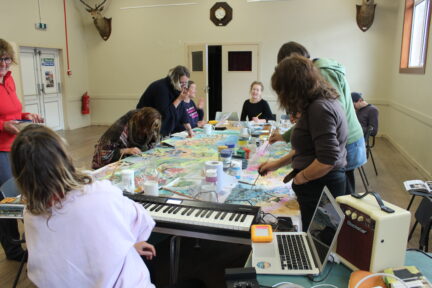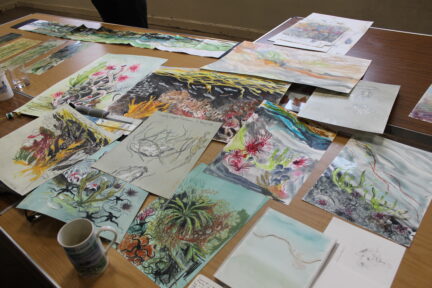Argyll Hope Spot news
News and updates from Argyll Hope Spot and from our champions and friends.
Follow us on our social media channels where we continue to share photos, news, celebrations, citizen science projects and the work of our champions and friends; https://linktr.ee/ArgyllHopeSpot
Join our mailing list for the latest news and opportunities to get involved:
2022 in review
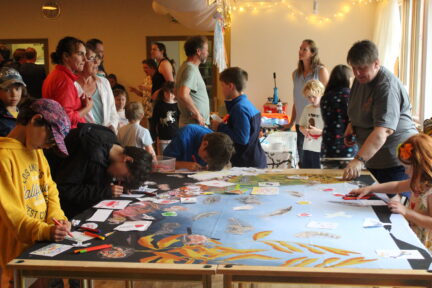
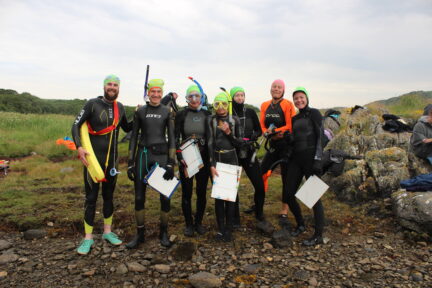
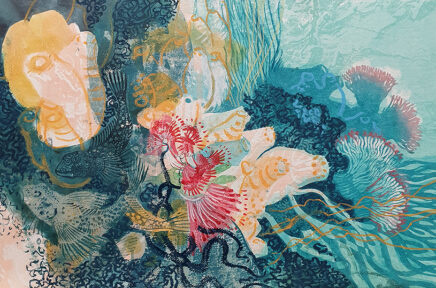
News from Argyll Hope Spot
We’ve been working with our friends Heart of Argyll Wildlife Organisation to bring Hope Spot Education to primary schools across the Hope Spot. In the classroom or on the shore, pupils have been learning about the incredible habitats and species of the Hope Spot with Pete and Oly. Fun activities, practical science and a life-sized Flapper Skate (they are huge!) all help to bring the underwater world to life.
In 2023 we will be expanding our education programme to more schools and groups. We are also offering CPD sessions to teachers and nature educators and continuing to offer our resources and lessons free-of-charge.
If you know of a school or group who would love to learn about our coasts and waters, please get in touch; hello@argyllhopespot.scot

In 2021 we hosted our first snorkelling residency for artists. Through our artists residencies, we hope to bring a range of audiences closer to the incredible world hidden beneath the surface. Eight artists visited the Argyll Hope Spot that year to explore, sketch and make new work. You can see some of their work here; 2021 Gallery.
They worked on the shore and in the water – even sketching whilst snorkelling. Their work brought to life scenes that we don’t normally see, and are not often represented through art. Audiences have found their work captivating and it really helped to shine a light on the importance of the habitats within the Argyll Hope Spot.
In 2022 we offered 11 artists the opportunity to join us in the Argyll Hope Spot over two weekends to learn, explore and make work under the waves. Priority was given to those working within the Hope Spot. Four artists from Argyll took part. Our artists included painters, a writer, a musician, photographic artists, a tattoo artist, sculptors and a jeweller. Over two weekends they snorkelled, sketched, collaborated and made work inspired by the species and habitats they encountered.
Through our residency artists developed new skills, made connections and collected material to help them further their own practice.
Our artists were supported by a great team including fellow wildlife artists, an open water swim coach and local ecologists. Argyll Hope Spot volunteers also offered support with hot dinners, space to meet and delivering delicious lunches to the beach!
All of our artists have since been working on pieces inspired by Argyll Hope Spot; and several of them have collaborated on work together.
Writer and podcaster Kathi Kamleitner recorded two episodes of her storytelling podcast Wild For Scotland reflecting on her experiences of Argyll Hope Spot. The first is embdeded below, or head to the Wild For Scotland website to hear both. Music for these episodes was composed by fellow resident artist Jen Austin. Listen on Spotify now.
Argyll Hope Spot champion John Aitchison was recognised as a Disney Conservation Hero. The award was presented to him by MSP Jenni Minto at Wild Seas Weekend in Ardfern.
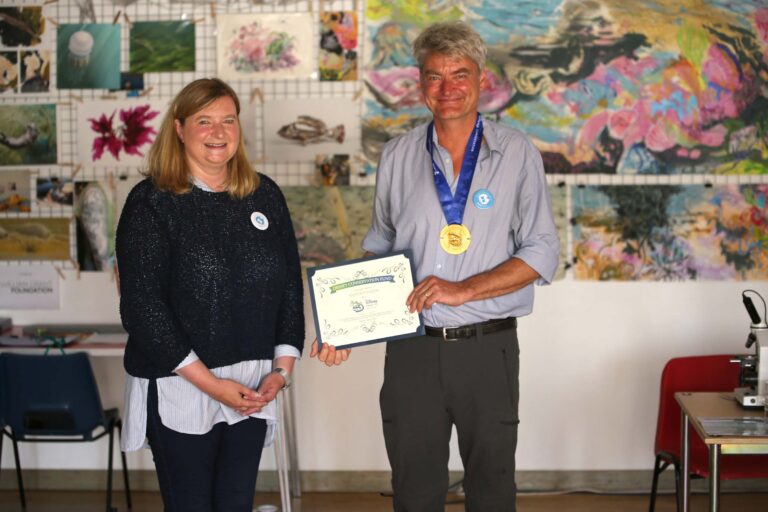
Heart of Argyll Wildlife joined Mid-West Sea Kayak Symposium to help kayakers learn about marine ecosystem – and to test our education materials on some “big kids!”
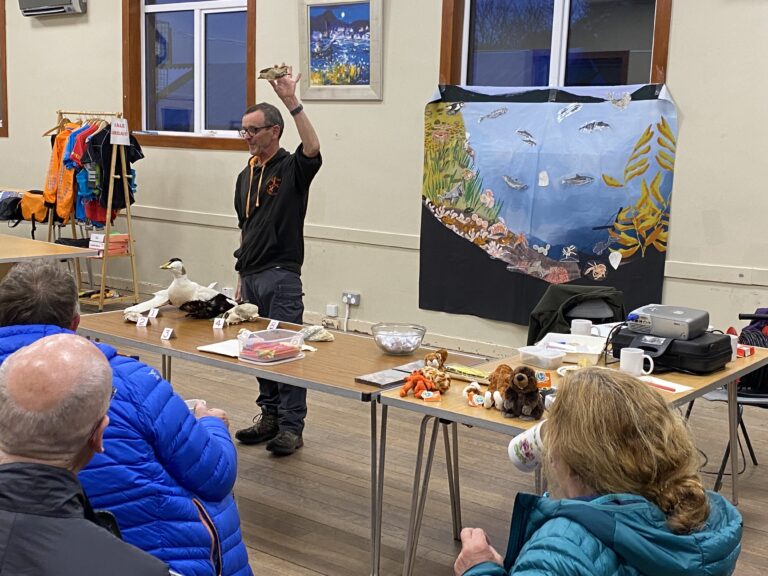
We attended a number of events such as Argyll’s Land & Sea by Time for Change Argyll & Bute to talk to bring marine life closer to residents.
In August, snorkelling artist Christina Riley joined Argyll Hope Spot volunteers to present the work of our artists at the Wild Seas Weekend in Ardfern. Visitors and locals were able to gain insight into the life in our waters through the work on display.

We supported Wild About Argyll, NatureScot and Scottish Wildlife Trusts in identifying suitable sites within their nature based Above & Below and snorkel trails across the area.
News from our Champions
Winter talk series
CAOLAS started the year by hosting a winter talk series. Participants tuned in to hear from experts about life in their loch. Dr James Thorburn spoke about the development of an MPA, Dr Mark Woombs shared an insight into everything echinoderm (starfish, sea urchins and more!) and Dr Texa Sim shared learnings from cetacean (whales and dolphins) strandings in Loch Ailne.
Dolphin stranded
In mid-January a male common dolphin washed up at the top of Lochaline. It was showing signs of being very sick and soon died. Whilst sad, a stranding like this is a very valuable scientific opportunity, so Texa Sim took the dolphin to the Scottish Marine Animal Strandings Scheme headquarters at the University of Glasgow School of Veterinary Medicine where a necropsy was carried out. The dolphin was found to have a rare cancer that had never been seen before in marine mammals. Although it wasn’t a happy outcome for this individual, it has contributed towards our greater understanding of marine mammals.
Serpulid survey in Loch Teacuis
In 2009, Mark Williams carried out a survey of serpulid worms in Loch Teacuis, on Loch Sunart’s southern side. This survey showed that the worms in the loch had formed reefs or aggregations – large clumps of their calcareous tubes which provide shelter and a home for many other species including sponges, sea squirts, brittlestars and sea urchins. This is extremely rare. It has only been observed in Loch Teacuis and Loch Creran (both in Argyll Hope Spot) and in two other places globally!
To follow up the 2009 study and see how these precious reefs are fairing, a new survey was devised in April with a group of 8 divers. In pairs they carried out three dives each (12 dives/transects in total). Some of the dives did record aggregations. However, Nature Scot also carried out a survey at different sites in the loch and were unable to find any. CAOLAS and Nature Scot are working together to confirm the ongoing presence and health of the aggregations. There are plans to return in 2023 with the support of a dive club in Glasgow who have volunteered their skills and time to help with the survey.
Native oyster restoration

In July 2021 the CAOLAS team received a delivery of native oysters weighing just 1 gram each. They were kept safe, growing in hanging baskets at Lochaline harbour over the winter. By May 2022 some oysters had reached 10g, meaning they were ready to be released. Volunteers gathered to release oysters in a num
ber of test sites. The remaining oysters continued to grow and by October all had been released. Since then, 10,000 new baby oysters have been received
and are now hanging out under the pontoons in their hanging baskets to grow over winter.
Morvern Gala Week foraging
CAOLAS and Morvern Community Woodlands invited a forager to host a session during Morvern Gala Week in July. Participants made seaweed bread, and camped out overnight. A beach clean was also organised, and following its success, CAOLAS now have lots of beach cleaning equipment for future sessions.
Floating classroom
Hebridean Whale and Dolphin Trust (HWDT) brought their wonderful research vessel, Silurian to Salen jetty and to Strontian in the summer. P4-7 pupils at the local schools were welcomed aboard to find out what it’s like to live on a research vessel and to see the data they are collecting.
CAOLAS have also been distributing “oyster education packs” in schools and have been collaborating with students at the University of Highlands and Islands too.
2023
CAOLAS are currently planning their 2023 Winter Talks series. They expect these to take place online and in person, and everyone is welcome to join. Follow them online to stay in the loop!
There are plans to host most sessions with local schools, supporting pupils to learn about and take pride in their incredible local marine ecosystems.
Equipped with their new kit, the CAOLAS team and volunteers will be heading out on beach cleaning expeditions – hopefully in some of the more remote beaches in their patch. Maybe you can lend a hand?
Surveys of Loch Teacuis will continue, with the support of the volunteer dive group from Glasgow. A survey of a local Seagrass meadow will be organised. Ahead of this, a group of volunteers will visit Seawiliding and CROMACH in Loch Craignish to learn about the seagrass monitoring and restoration work taking place there.
Other ambitions include hosting an ocean film festival – with documentaries, storytelling, animation and more – and a CAOLAS roadshow travelling to villages across the area in the spring.
Friends of Loch Etive have had a quiet year. Previously their work had been focused on opposing damaging fish-farming practices in the Loch. With the operator of the local fish farm going into administration, the fish-farm was closed.
Friends of Loch Etive have received reports of large amounts of sea lice in the loch during the operation and following the closure of the fish farm. If you would like to know more about sea lice, salmon and what you can do, Wild Fish have a great set of resources and campaigns.
If you’d like to find out more or get involved with the work of Friends of Loch Etive, take a look at their website; www.lochetive.org
Community-led Marine Co-management
At the end of 2021 CROMACH surveyed the Craignish community about their relationship with Loch Craignish. You can read the report from this survey here; Mon the Fish Report.
One of the conclusions of this survey was that the community felt they wanted greater agency over the management of the loch, and to work together to protect and enhance ecosystems and biodiversity.
Since then they have been working across the community to develop a proposal for a Demonstration & Research Marine Protected Area for Loch Craignish. Demonstration & Research Marine Protected Areas can be developed for the purpose of demonstrating, or carrying out research on sustainable methods of marine management or exploitation in territorial waters. Demonstration & Research Marine Protected Areas must have support from local stakeholders and the communities around them. D&R MPAs are relatively new – in fact there is currently only one D&R MPA, in Fair Isle, Shetland Islands. You can read more about the process here; Exploring a D&R MPA
Wild Seas Weekend
In August CROMACH hosted the Wild Seas Weekend at Craignish Village Hall in Ardfern.
Over 350 people attended and got involved in activities that celebrate marine conservation.
Co-hosted with Seawilding, Argyll Hope Spot, Heart of Argyll Wildlife Organisation and the Friends of the Sound of Jura, the weekend was a chance for residents and visitors to dive into all of the fascinating work being undertaken locally to improve the health and biodiversity of our local waters and to raise awareness about the biodiversity of our local seas.
Visitors saw films and exhibitions in the Craignish village hall. They took part in guided seagrass seed harvesting in the Loch, a native oyster release, a shoreside safari and paddle-boarding. Nature Scot hosted an exhibition on Flapper Skate, Seawilding invited members of the public to look at marine life through microscopes, Heart of Argyll held interactive art-workshops for kids and the Hope Spot displayed artwork created by artists inspired by snorkelling in a nearby loch. The Seawildlings – a group of young people learning all about the marine environment – shared their knowledge with local MSPs Arianne Burgess and Jenni Minto who also took part in the fun.
Loch memories
The CROMACH team have been recording oral histories of the loch with residents and visitors. It has been a great insight into people’s memories of the loch. This anecdotal data can tell us a lot about changes in the loch over time.
“When I first started doing fishing trips 20 years ago I had to take hooks off the line – there were too many mackerel for customers to pull it in otherwise.”
Another participant recalls hearing a drumming sound on the hull of the boat – “It was herring. There was that many of them.”
Species and habitat restoration
Volunteers across the community have been involved in various species and habitat restoration projects in Loch Craignish – led by Seawilding. Native oysters are growing well in safe nursery cages, and many were released at a series of events over the summer. The first batch of seagrass seedlings – grown from seed hand harvested in Loch Craignish in 2021 – have been planted. More seeds were also collected from present meadows to be nurtured in Seawilding’s onshore facilities ready for planting soon. Well done to everyone involved.
2023
Plans for next year include surveying Loch Craignish including identifying Priority Marine Features (PMFs) with the ROV (Remotely operated underwater vehicle) CROMACH share with neighbouring champions Friends of the Sound of Jura.
Alongside other community stakeholders in Loch Craignish, CROMACH will be progressing their proposal for a Demonstration & Research Marine Protected Area in their loch.
Easter egg surprise
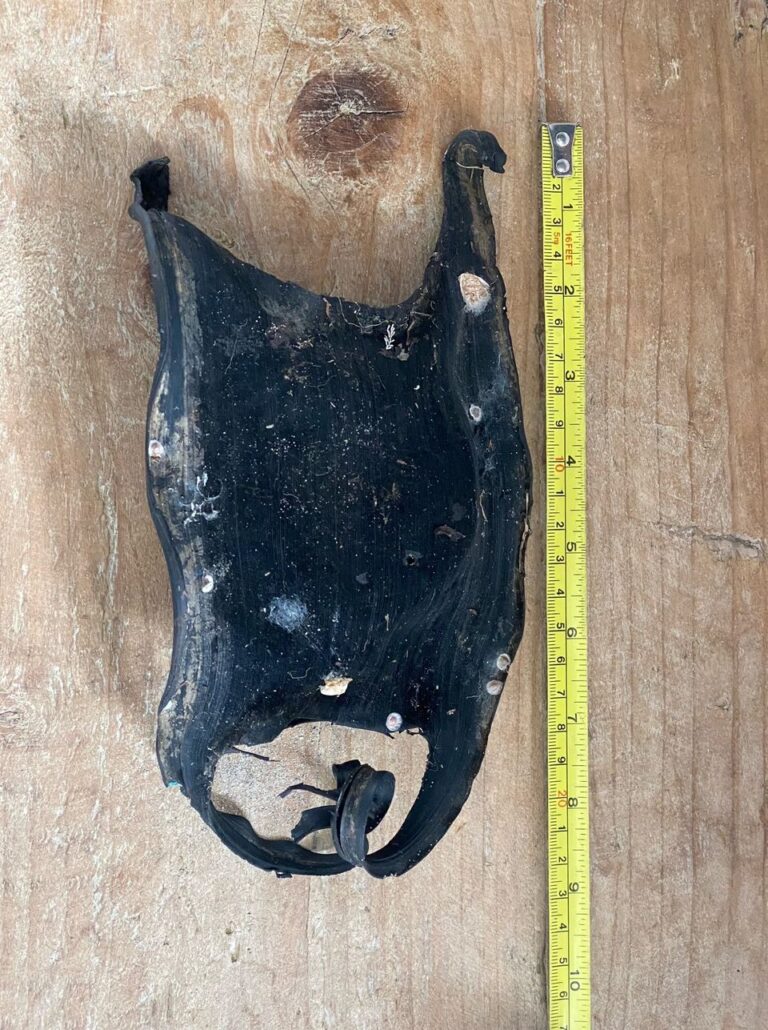
In April two White Skate eggcases were found washed up at two locations in Loch Sween. It is known that the Argyll Hope Spot is home to the endangered Flapper Skate, which is Europe’s largest skate, but these were the first records of White Skate in this area. White Skate numbers are also stru
ggling, so whilst it is interesting to find these eggcases so close together, it a
lso raises questions as to why they are appearing on our coastline. Did you find any eggcases on the beach this summer? Use the Shark Trust’s fantastic Great Eggcase Hunt guide to indentify the species!
Recognition
Congratulations to John Aitchison, who has been named as one of the UK’s 100 most influential environmental professionals by ENDS Report. This accolade has also been given to Howard Wood at nearby Arran COAST.
Disco scallops
Friends of the Sound Of Jura hosted a free talk at Tayvallich village hall in July with the title “Disco Scallops!” The talk was delivered by Dr Bryce Stewart who is from the Department of Environment and Geography at the University of York. Bryce shared his most recent research using flashing lights to attract scallops into creels; a potentially more sustainable way of harvesting scallops.
Argyll Hope Spot artists’ residency
The Tayvallich community hosted our artists’ snorkelling residency, and volunteers from Friends of the Sound of Jura supported with delicious group meals, space to share work, local knowledge, and general organisation and support.
Tayvallich Wildlife Club
Children of Tayvallich and the surrounding area have been taking part in wildlife activities. They joined Heart of Argyll Wildlife for a seashore safari on their local beach. They also took a trip to the Treshnish Islands – to Staffa and Lunga – to see puffins and other seabirds up close!
Ocean Restoration Training Weekend
Three young people from the Tayvallich area joined Seawilding’s young people’s ocean restoration training weekend – “It was super inspiring to see how enthusiastic and engaged the decision-makers of tomorrow are in protecting the ocean, and knowing the seas will be in such caring hands in the future is all the more motivation for us to step up and do whatever we can now to pass on the best possible legacy”. Since this they have undertaken some surveying in the Loch Sween area to understand if there is scope for restoration work in this area.
HPMA conversation and debate
Friends of the Sound of Jura facilitated an evening of conversation and debate for the local community on the Scottish Government’s proposal for Highly Protected Marine Areas (HPMAs) in our waters. The proposal would see 10% of Scotland’s sea bed area (including insore and offshore) dedicated as HPMAs. The conversation included a wide range of community members – including those who make their living in the sea, such as fishers. Ariane Burgess MSP joined the conversation to hear what the community felt, and how it might affect them. People wanted to know more about how it might affect or benefit them. Friends of the Sound of Jura will continue to support the whole community in finding out more and contributing towards the development of this proposal. A consultation is now open on the matter; https://consult.gov.scot/marine-scotland/scottish-highly-protected-marine-areas/
Coastal Communities Network
All of our champions are members of the Coastal Communities Network. The Coastal Communities Network is made up of 21 community-based groups located across Scotland, united by a desire for a stronger community voice in the management of our seas & coasts. Together they engage Government & other partners to advocate for better protection of our unique marine biodiversity. The network work together with MSPs, ministers, and other decision makers to deliver better marine regulation. This year they have been involved in discussion with SEPA and other partners as they develop a new framework for regulating the impact of sealice from fish farms, as well as other campaigns.
Seawilding – Native oyster and seagrass restoration
Seawilding, based at Loch Craignish, Argyll, is the UK’s first community-led native oyster and seagrass restoration project. Their aim is to restore lost biodiversity, sequester carbon, and to create green jobs. They are pioneering low-cost, best-practice marine habitat restoration methodologies and empowering other coastal communities to do the same.
This year they have expanded their native oyster nursery to supply not only 1 million oysters to the Loch Craignish seabed but to stock to other restoration projects too. They now have 250,000 oysters in floating cages and 300,000 on the seabed, cleaning seawater and creating habitat for all sorts of sea beasties! Seawilding are supporting communities around Scotland’s coast on their own marine-restoration journeys.
Huge congratulations to Seawilding who recently won the Coast and Waters Award at the Nature of Scotland Awards. This is hugely deserved recognition for the incredible work they are doing.
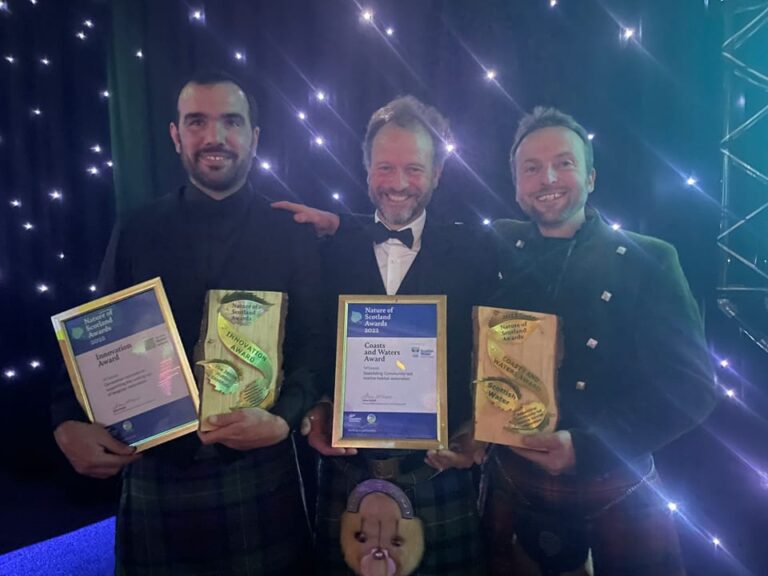
Elsewhere in Argyll Hope Spot
When the Argyll Hope Spot was first established, one of our original champions was Save Seil Sound. After years of campaigning, the group decided to disband. Some members of the group still share information about ongoing marine protection campaigns on the West Coast Matters Facebook page.
Friends of Loch Creran are a small group who are campaigning for protection of their loch. Loch Creran is one of only two locations in the UK (and four sites globally) where serpulid worms form beautiful habitat building reefs.



